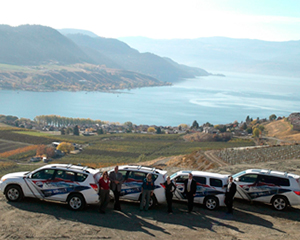7 Steps for Building a House on the Lakefront in the Okanagan
Building on any property that has water on or near it is not for the faint of heart. I’m going to talk about the important things you need to know when considering a build near water.
In our first video in this series “Buying Real Estate on the Lakefront” –– we noted that Lakefront property is subject to many regulations. Once you understand the terms like Riparian, Accretion and Foreshorem then it’s time to talk about the 7 steps involved in building new construction or reconstruction on the waterfront.
Step #1: The Surveyor
This step involves a professional BC land surveyor visiting the property and conducting a survey to establish the current property lines. The surveyor will determine whether the property is larger, or smaller than the current plot plan states. Because the landowner generally owns up to the high watermark, and because the high watermark changes over time due to accretion or erosion, it’s important to determine the actual high watermark and the only way to do that is with a professional survey.
The second part of the survey is determining the 30-meter Riparian Protection Area setback from the high watermark. Technically no new buildings are permitted within that 30 meters from the high watermark, although in practice, it’s the 15-meter line that seems to be the magic number. There are many properties on the lake that would be rendered unbuildable as the whole property isn’t even 30 meters deep, and we will go into this in more detail shortly.
Step #2: The Biologist
The Survey will then supply the QEP (Qualified Environmental Professional) or Biologist with the survey outlining where the property lines are. The QEP will also arrange a visit to the property to determine if there are any concerns about building on the property. The Biologist will then determine Step #3 which is the RAPR SPEA.
Step #3: The RAPR SPEA
RAPR SPEA stands for Riparian Areas Protection Regulation Streamside Protection and Enhancement Area. It’s a mouthful! This line determines where you can build. If there is already a structure on the property, you may be able to build on the same foundation as currently there, however not beyond. If no structure exists on the property, it’s much more restrictive. This is why it’s so much better on a smaller piece of property on the lake to buy a property with an existing structure and build on the existing foundation, and why raw land on the lake that has never been built on is a challenge. Sometimes your only option for raw land is to build up. EXCEPT – technically you are not allowed to increase the 3-dimensional space either, meaning a single-story house should be replaced with a single-story house.
Step #4: The House Plan
Based on where the SPEA line falls, your designer or architect can now appropriately design your home to fit into the space allotted and calculated by the surveyor and the QEP. Designing any house plan is an agonizing process, and on the lake is certainly no easier.
Step #5: Hire a Builder
As I’m sure you can see, this process pays to have experience on your side. Having a builder experienced in lakefront building is a must.
Step #6: The Development Permit
Once your house plan is in place, or at least your exterior footprint, it’s time to go for the Development Permit. This is different than a building permit. Due to the Riparian Area Restrictions, a Development Permit is required from the City prior to even applying for your building permit. Sometimes your permit may have to go before Council for various reasons. This process can take approximately 3 months.
Step #7: The Building Permit
After you finally receive your Development Permit, now it’s time to go for what someone building on a regular subdivision building lot did 5 steps ago and go for your building permit.
Once the building permit is received it’s time to move forward with your lakefront build!
As I said at the beginning, this process is not for the faint of heart or anyone in a huge hurry to build. It takes time, patience, and some extra dollars. However at the end of the day, you will end up with this and it will all be worth it!
I’m sure you can see why it is so important to call a Realtor who specializes in lakefront and resort properties when buying, or selling, lakefront. Stay tuned for our next video on “Dock” and all the things you need to know about buying a lakefront property without – or with – a dock on the foreshore.












Comments:
Post Your Comment: